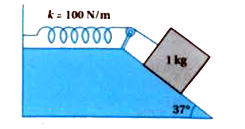Obtain the resultant wave of more than two wave functions by representing the superposition principle mathematically. Solution in Gujrati
Let y1(x,t)andy2(x,t) be the displacement that any element of the string would experience if each wave travelled alone.
The displacement y(x,t) of an element of the string when the waves overlap is then given by,
y(x,t)=y1(x,t)+y2(x,t) ...(1)
If we have two or more waves moving in the medium the resultant waveform is the sum of wave functions of individula waves.
y1=f1(x−vt)
y2=f2(x−vt)
----
----
If yn=fn(x−vt), then resultant wave function, y=f1(x−vt)+f2(x−vt)+,....fn(x−vt)
∴y=n∑i=1fi(x−vt) where i=1,2,3,...,n
The phenomenon of superpostition of two waves of a same medium is called interfeference.
Topper's Solved these Questions
- WAVESBOOK - KUMAR PRAKASHANCHAPTER - WAVESEXERCISE - SECTION-A TRY YOUR SELF
63 Videos
- WAVESBOOK - KUMAR PRAKASHANCHAPTER - WAVESEXERCISE - SECTION-B (Numericals) (Numerical From Textual Illustrations)
14 Videos
- UNITS AND MEASUREMENTBOOK - KUMAR PRAKASHANCHAPTER - UNITS AND MEASUREMENTEXERCISE - Section -F (Questions from Module )
20 Videos
- WORK, ENERGY AND POWER BOOK - KUMAR PRAKASHANCHAPTER - WORK, ENERGY AND POWER EXERCISE - QUESTION PAPER (SECTION - D)
1 Videos
Similar Questions
What are called waves ? Mention their importance.
View SolutionGiven below are some examples of wave motion. State in each case if the wave motion is transverse, longitudinal or a combination of both:
(a) Motion of a kink in a longitudinal spring produced by displacing one end of the spring sideways.
(b) Waves produced in a cylinder containing a liquid by moving its piston back and forth.
(c ) Waves produced by a motorboat sailing in water.
(d) Ultrasonic waves in air produced by a vibrating quartz crystal.
View SolutionIf the error in measurement of radius of a shpere is 2% then the error in determination of volume of the sphere will be …………
View SolutionA 1 kg block situated on a rough incline is connected to a spring constant 100Nm−1 as shown in figure . The block is released from rest with the spring in the unstretched position . The block moves 10 cm down the incline before coming to rest . Find the coefficient of friction between the block and the incline .Assume that the spring has a negligible mass and the pulley is frictionless.

View SolutionState the principle of superposition of waves.
View SolutionState the principle of superposition of waves.
View Solutionतरंगों के अध्यारोपण सिद्धांत को समझाइये ।
View SolutionWhat is the principle of superposition of waves ?
View SolutionState the principle of superposition of waves.
View SolutionWaves | The Principle Of Superposition Of Waves, Reflection Of Waves.
View SolutionState the principle of superposition of waves. Derive an expression for the resultant wave formed due to superposition of two waves.
View Solutionअभिकथनः समान डोरी पर दो ज्यावक्रीय तरंगें व्यतिकरण प्रदर्शित करती हैं।
तर्कः ये तरंगें, अध्यारोपण के सिद्धांत के अनुसार योजित या निरस्त हो जाती हैं।
View SolutionSpeed of a Transverse Wave on Stretched String|The Principle of Superposition of Waves
View SolutionState and illustrate the principle of superposition of waves.
View SolutionGive some examples of principle of superposition of waves?
View Solution
